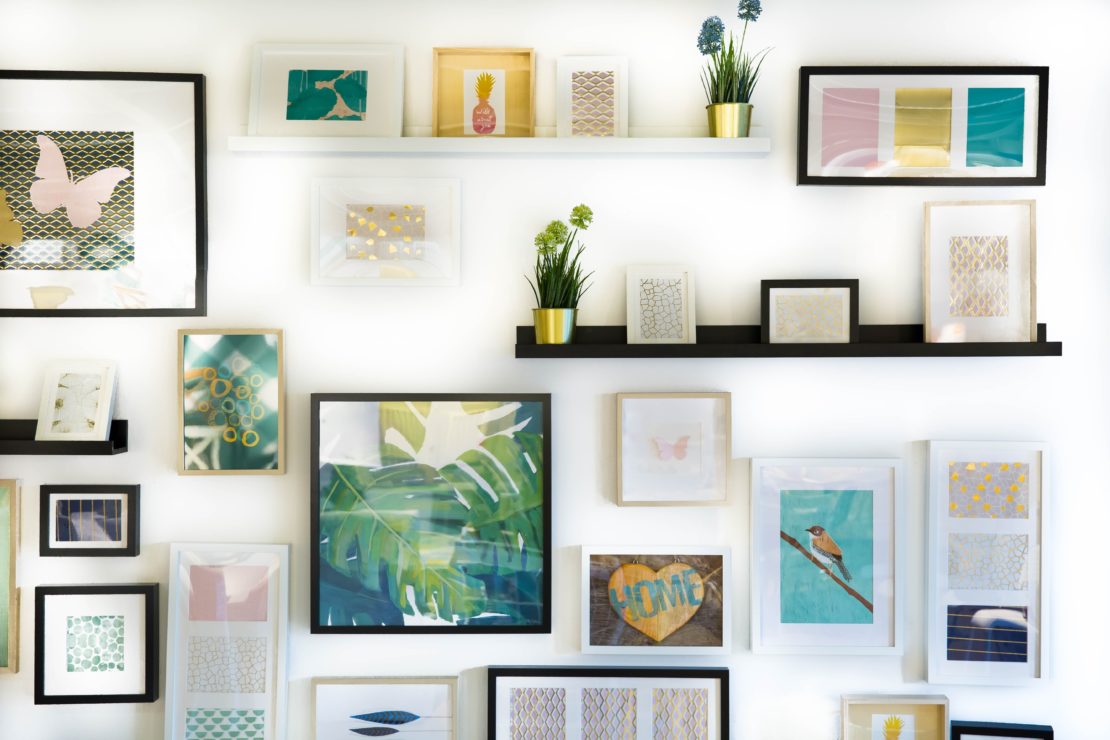Your first home is an opportunity to express yourself, and what better way to do that than art? Hanging and styling artwork can create a visual masterpiece that reflects your personality and style. Of course, if you’ve only rented, you may not have had the opportunity to hang anything on your walls. How do you go about it? Here are some ideas to bring your walls to life.
Gather Supplies
The most amazing piece of art in the world will look terrible if not hung properly. To get started, you need a hammer, tape measure, nails in various sizes, wall-plug anchors, screws that fit them and a screwdriver. If you are hanging pictures on glass or tile, choose low-profile adhesive hooks. If you are hanging art on brick, use brick clamps.
How High?
Galleries and museums typically hang their art pieces approximately 57 inches above the ground. That’s the average eye level for most people. Start by marking the height with a pencil, then measure to find the middle of the wall from end to end and mark where the two points meet. That’s where you should center your piece. Measure the distance between the middle of the piece, and where it will catch the nail. Measure that difference from your mid-point mark on the wall — that’s where the nail goes. Mark that spot.
Hang It Up
How you hang a piece depends on how heavy it is. Light pieces need small nails. Heavier pieces need larger nails or wall-plug anchors and screws.
Choose Your Pieces
Now that you know how to hang a picture, it’s time to get creative. Consider the style and theme of your space, the size and shape of the walls and the overall color palette. Think about the purpose of the room and the mood you want to create. Choose pieces that resonate with you and reflect your personal taste. Consider a mix of different mediums, such as paintings, photographs and prints to add depth and variety.
Identify Focal Points
Where do you want to draw the eye? Hang your most prominent artwork or a collection of pieces in this area to create a visually captivating focal point. The eye will naturally be drawn to this area, setting the stage for the rest of your artwork arrangements.
Balance and Symmetry
Strive for a cohesive look. You can do this by creating a grid-like pattern, aligning the center of each piece at the same height or using symmetrical arrangements. This sort of styling works well in formal living and dining rooms or studies.
Scale and Proportions
Your art should harmonize with your furniture and the size of the room. You don’t want to put a small portrait in a large room. It will get lost. A large painting in a small area will make the room feel cramped.
Have Fun, Be Eclectic
Informal areas such as family rooms, kitchens and game rooms may benefit from more eclectic groupings. Choose pieces of different sizes and shapes. Experiment with overlapping frames or creating clusters that vary in heights and orientations.
Light It Up
Proper lighting is crucial in highlighting the beauty of your artwork. Install adjustable track lighting or picture lights to focus attention on specific pieces. Experiment with different lighting angles and intensities to create dramatic effects and accentuate the textures and colors of your artwork.
Visit Marvida Model Homes
A great way to get inspiration for styling your artwork is to visit model homes in Marvida. The homes are professionally decorated which means designers have chosen artwork that complements each room. If you really like the rooms, speak with a sales counselor about making your home in Marvida today.



